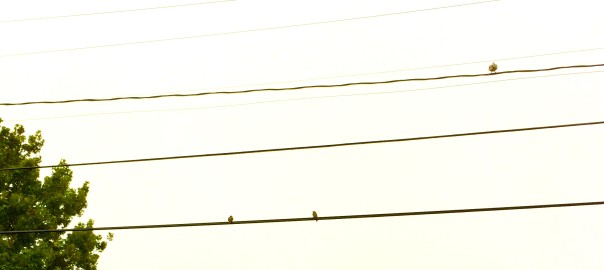January may mark the start of the calendar year, but for everything else — including book publishing and advertising — the real starting gun seems to go off the day after Labor Day. Which is a good time to remember that when you’re moving at full speed you better have an eye on the road ahead:
MOBILE PREPAREDNESS FOR TV CAMPAIGNS
If you’re paying for TV ads, make sure you’re paying attention to mobile media at the same time, especially if you’re running ads on a live event:
“Digital research is a natural activity to pair with commercials when so many people are already using a second screen besides the television.”
#mobile #social #tv
ALEX CHEE ON ELENA FERRANTE AND SOCIAL MEDIA
A terrific writer who is prominent on social media discusses the improbable success Ferrante’s found in part by opting out. It’s all good, but we admit that this caught our eye:
“When I see ads from publishers now on book blogs, I still mourn the old reviews.”
#social
FACEBOOK BOWS TO PRESSURE ON ADS
Facebook announces changes the ad industry has been calling for: the option of buying 100% video viewability (as opposed to counting partial views), and introducing third party measurement of ad performance
#social #video #tracking
MORE ON AD BLOCKING
A smart piece from the Verge about the angst in the industry around ad blocking:
“You might think the conversation about ad blocking is about the user experience of news, but what we’re really talking about is money and power in Silicon Valley. And titanic battles between large companies with lots of money and power tend to have a lot of collateral damage.”
#adblocking
CLUETRAIN AUTHOR SAYS AD TECH DOESN’T HAVE A CLUE
The coauthor of the Cluetrain Manifesto, Doc Searls, argues against trends of personalization and targeting and for old fashioned values of good product, service, and honest brand awareness
#adtech #data #targeting
THE RISE OF THE HUMANIST SANS SERIF
Bloomberg takes a look at changes in logo fonts of tech companies, and investigates what that says about the evolution of tech strategy.
#design
IS LIVE STREAMING THE NEXT CRUCIAL MARKETING PLATFORM?
This article for ClickZ suggests it is.
#livestream
AL ROKER, “RIGHT NOW I’M PERISCOPING YOU . . . “
“. . . and boom: 40 . . . 50 people. Bam.” Ad Week talks to Al Roker about live streaming, video apps, and why he thinks people should watch video horizontally (even if they won’t).
#livestream
GO HAWKEYES!
The presidential campaign in Iowa saw its first geo-filter ads: Ted Cruz in advance of the Iowa-Iowa State game.
#social #snapchat #geotarget
U.S. READERS (EVEN THOSE WHO PREFER PRINT) ARE ON THE MOBILE WEB
But you knew that. Here are the latest numbers to back it up:
“One direct consequence of widespread smartphone and tablet use is vastly extended mobile internet access. About 60% of North America’s residents—more than 215 million people, eMarketer projects—will use a mobile phone to access the web in 2015.”
#mobile
WHAT’S YOUR READER’S MOOD: DISCOVER, LEARN, TRY, OR BUY?
When it comes to the marketing funnel, book advertising usually leans heavily toward discovery, but the whole route to purchase is important to keep in mind. What are readers looking to do when they see your ad: are they looking to discover a book? learn more about something? ready to buy? eMarketer shares a chart from the CMO Club that outlines the different platforms US and European marketers find best for the different stages of the customer journey.
#marketingfunnel
MYSPACE?!?
New owners Specific Media are trying to convince us that MySpace still has legs. Here’s their argument:
“In March, measurement firm comScore reported that between December 2013 and December 2014, MySpace had grown traffic in the US by 469%, making it a bigger property than Snapchat and Vice. ComScore said the “surprising renaissance” was thanks to MySpace’s pivot to music and video content.”
#social #myspace #again?
DIFFERENT GENERATIONS SHARE DIFFERENTLY
This infographic from Accenture shows levels of social platform sharing and brand trust across different social networks, broken out by age. What family and friends share ranks much higher than what brands share. Facebook and print newspapers are the most trusted platforms for paid messages; Snapchat and blogs are the least.
#social
IS DARK SOCIAL A GOOD PLACE TO ADVERTISE?
Yes, says Whisper. Coke, Fox, and MTV seem to agree.
#social
DOES PROGRAMMATIC HAVE A COST ADVANTAGE OVER PRINT?
Not necessarily, says this article for Ad Age:
“Programmatic ad tech involves not just the ad inventory at the end, but a trail of fees and costs along the way to pay for expensive engineers and traders, data-management platforms, research and development and more. It adds up to make programmatic buying more expensive than ordering print ad pages or TV commercials through insertion orders and other routine methods.”
Applicability warning: This is an article about campaigns that range from the seven figure to the nine figure. At the levels that book publishers typically run, the fees and costs are less onerous, but it’s still important to keep in mind.
#programmatic
VIDEO AD ROI
We’ve linked a lot to performance numbers for video ads in Next to Now over the months. But it’s worth remember that they are also more expensive to produce. It’s this discrepancy that leads many marketers to worry about ROI and video ads.
#video
REACHING YOUNG (BUT NOT *TOO* YOUNG) USERS ON SNAPCHAT
Jim Beam is using Snapchat to market it’s apple-flavored bourbon. While Snapchat does not allow much targeting — and this is on purpose — they offer enough age targeting to allow the bourbon maker to advertise only to users 21 and over. There’s still plenty of market there, since Snapchat’s 21-and-over audience represents 82 percent of its total user base.
#social
PODCASTS REMAIN HOT
Book publishers aren’t the only advertisers waking up to the power of podcast advertising.
#podcasts










